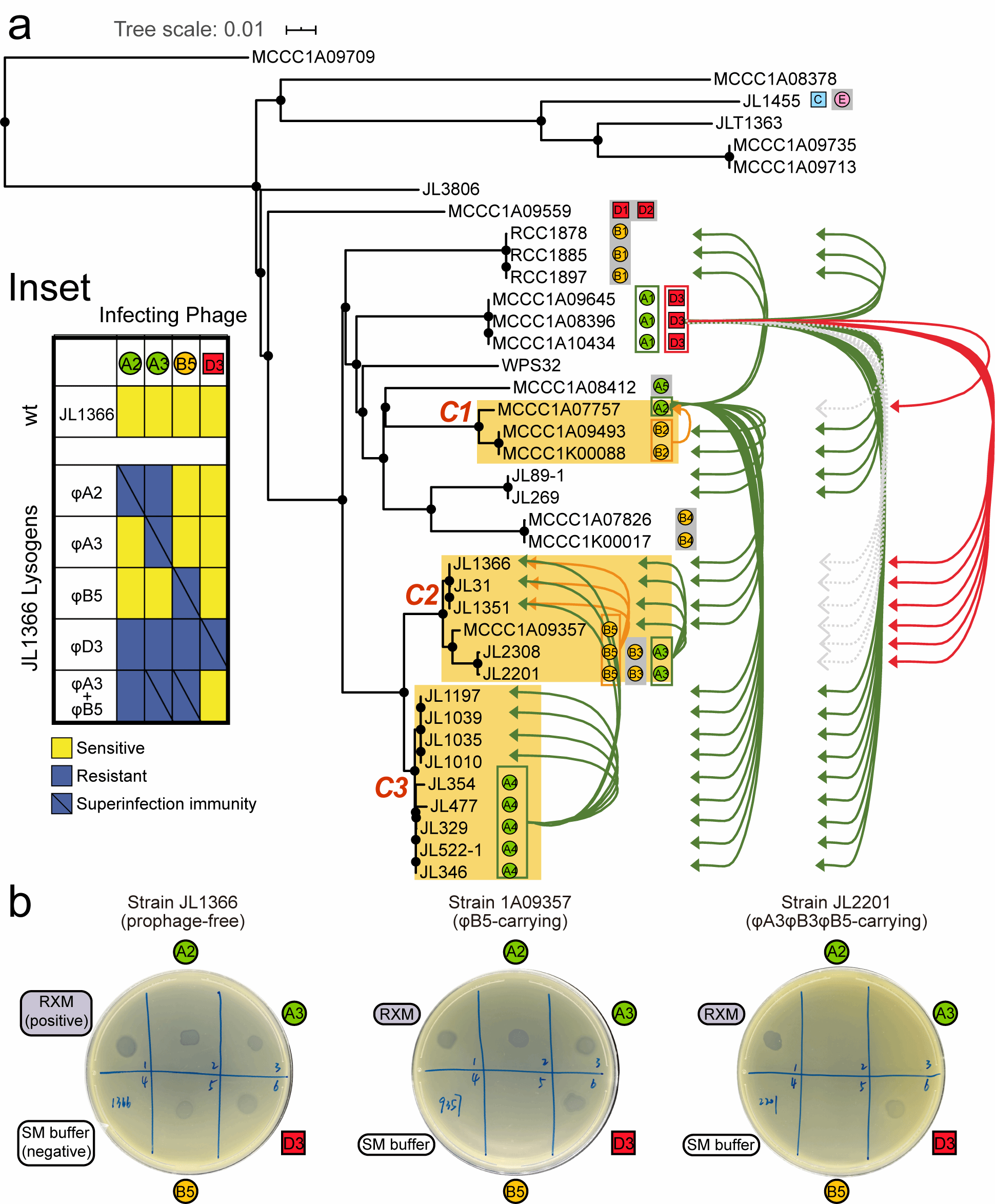August 29, 2025 – Professor Rui Zhang's research group published a research paper titled "Prophages in marine Citromicrobium: diversity, activity, and interaction with the host" in ISME Communications, a journal in the field of microbial ecology. This paper systematically presents the multifaceted effects of prophages on the evolutionary and ecological characteristics of their marine bacterial hosts. Dr. Ruijie Ma is the first author of the paper, Professor Rui Zhang is the corresponding author, and Shenzhen University is the primary affiliation.
Lysogeny was frequently detected in marine ecosystems, while how temperate phage genomes (prophages) impact marine microbial population or individual dynamics remained poorly understood. Using marine Citromicrobium strain collection as a model system, we revealed that 58% were lysogens harboring 31 prophages that can be grouped into five novel genera (φA–φE). Prophage-encoded genes constituted 9% of host accessory genome, significantly expanding the microdiversity among citromicrobial clonal strains. Metagenomic abundance correlations indirectly supported the “Piggyback-the-Winner” dynamics for φA/φE, evidenced by their sublinear growth pattern with increasing host abundance. Most prophages were capable of spontaneous induction and exhibited high lytic activity when triggered by mitomycin C. Importantly, host-range profiling revealed these prophages deployed a dual “Kill-the-Relatives” and “Colonize-the-Relatives” strategy, and meanwhile, they protected parental host strains through superinfection immunity and enhanced phage resistance with greater prophage carriage. Collectively, this work establishes prophages as key architects of bacterial adaptation and provides new perspectives for prophage-driven evolution in marine bacterial hosts.
This work was financially supported by the Guangdong Major Project of Basic and Applied Basic Research, the National Natural Science Foundation of China, the Shenzhen Science and Technology Program, the China Postdoctoral Science Foundation, the Guangdong Basic and Applied Basic Research Foundation, and the Innovation Team Project of Universities in Guangdong Province.
Link to the original article:
https://doi.org/10.1093/ismeco/ycaf148



